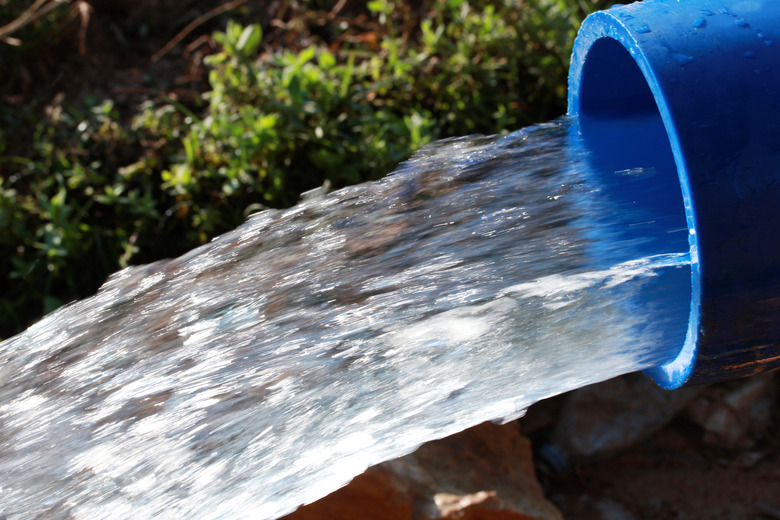How To Calculate Critical Velocity
Critical velocity is the speed and direction at which the flow of a liquid through a tube changes from smooth, or "laminar," to turbulent. Calculating critical velocity depends on multiple variables, but it is the Reynolds number that characterizes the flow of the liquid through a tube as either laminar or turbulent. The Reynolds number is a dimensionless variable, meaning it has no units attached to it.
Calculating Critical Velocity
Step 1
If you wanted to find the critical velocity for water moving through a section of pipe, we'll start out by using the basic formula for calculating critical velocity: Vcrit = (Nrµ) / (Dρ). In this equation, Vcrit represents critical velocity, Nr represents the Reynolds number, µ (mu) represents the coefficient of viscosity (i.e., the resistance to flow) for a given liquid, D represents the inner diameter of the pipe, and ρ (rho) represents the density of the given liquid. The µ (mu) variable is measured in meters-squared per second and the density of the given liquid is measured in kilograms per meter-squared.
Step 2
Say you have a two meter-long section of pipe with an inner diameter of 0.03 meters, and you want to know the critical velocity of water passing through that section of pipe at a velocity of 0.25 meters per second, represented by V. Although µ varies with temperature, its typical value is 0.00000114 meters-square per second, so we will use this value in this example. The density, or ρ, of water is one kilogram per cubic meter.
If the Reynold's number is not given, you can calculate it using the formula: Nr = ρ_V_D/µ. Laminar flow is represented by a Reynold's number of less than 2,320, and turbulent flow is represented by a Reynold's number of greater than 4,000.
Step 3
Plug in the values for each of the variables of the Reynold's number equation. After plugging in the values, the Reynold's number is 6,579. Because it is greater than 4,000, the flow is considered turbulent.
Step 4
Now plug in the values to the critical velocity equation, and you should get: Vcrit = (6,579_0.000000114 meters/second-squared) / (0.03 meters_1 kilogram/cubic meter) = 0.025 meters/second.
Cite This Article
MLA
Marker, Jonathan. "How To Calculate Critical Velocity" sciencing.com, https://www.sciencing.com/calculate-critical-velocity-8440253/. 13 March 2018.
APA
Marker, Jonathan. (2018, March 13). How To Calculate Critical Velocity. sciencing.com. Retrieved from https://www.sciencing.com/calculate-critical-velocity-8440253/
Chicago
Marker, Jonathan. How To Calculate Critical Velocity last modified March 24, 2022. https://www.sciencing.com/calculate-critical-velocity-8440253/
